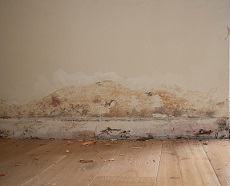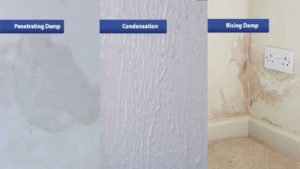
Damp issues can affect any property or house at any time though it is more rampant in environments where the rain never seems to stop. Davidsons Damp Proofing will enlighten you on why even though these issues might be tagged as one, it is crucial to determine the specific type and fix it to prevent more problems later on.
Once you see or notice a sign of moisture, you should contact a qualified and experienced damp specialist because early intervention will prevent health problems and significant damage to your home. You can read more here.
Types of damps issues
There are many moisture issues within homes which can become a big problem if not handled early. It might look less serious but they still pose a risk to our health and home. This website will give you information on mold effect: http://theconversation.com/health-check-how-does-household-mould-affect-your-health-48341
The main types are described below
- Rising damp
Rising damp is a major problem in houses caused by a lack of or damage to the original damp proof course (DPC), incorrect exterior ground level etc. When a house is being built, physical damp proofing barriers like a blue brick, lead-lined bituminous are installed into the walls.
Then, the barrier gets damaged which will allow ground water to enter the porous building material e.g. bricks and stones that soak up the moisture. Since rising damp causes an increase in the conductivity of the walls, this lead to heat loss and timber decay.
A fast action is required to sort out the issue and reduce damage to your home. The tell-tale signs include wallpaper peeling, tide-mark on the walls over skirting boards of up to 1 meter. Also, the presence of efflorescent salts produced by the wet brickwork.
- Penetrating / Lateral damp
Penetrating damp is often caused by water leakage through walls. Common causes are plumbing issues, incorrect exterior ground level, water sipping in exterior wall cracks or by roof leaks. It appears as wet patches on ceilings or walls that get dark after rains.
With time, structures get damaged, paint and wallpaper peels, plaster flakes and floorboards rot.
- Condensation damp
Condensation is the most common issue which is caused by moist air accumulation on walls, especially in the bathrooms and kitchen. Most practices to have better heat retention often result in a lack of proper air ventilation and trapped moisture in a home.
Strong musty smell, fabric and wallpaper damage, water droplets collecting on tiles and insides of windows, as well as black mold growth are the tell-tale signs of condensation problems.
Over time, severe condensation causes permanent plaster and timber damage.

What is damp proofing?
Damp proofing is very vital because it involves preventative measures put in place to eradicate these issues within your home. Check out damp proofing materials.
5 effective ways to prevent damp issues in your home
- Outdoor regular maintenance of your home
After every winter storms, inspect your roof for any damage. Clear gutters and if possible, install gutter guards to keep the gutter clear of leaves and other debris.
- Maintain a constant temperature within your home
Install proper wall and window insulation to avoid condensation. Avoiding irregular temperature by setting your thermostat to a low temperature for some hours per day.
Replace elements in old central heating units or upgrade to programmable room thermostats. This will enable monitoring and control of temperature by smart devices.
- Reduce moisture production
Dry your laundries outside on the clothing lines instead of indoors. If indoor drying cannot be avoided, use a condenser or a vented tumble dryer that will not release moist air into your house. Use cooker hoods and pans with lids while cooking.
- Proper ventilation of the home
Lessen condensation by allowing moisture to go out of your home. Ensure tumble dryers and washing machines are well vented.
Remove moisture from your kitchens and bathrooms by installing extractor fans. To ensure air circulation, place furniture a few centimeters away from the walls.
Install curtain rail that will allow curtains to be pulled away from the windows. Use a smart dehumidifier to keep your house warm and comfortable since it will remove extra moisture from the air.
- Use moisture resistant paint
Paint bathroom and kitchen areas with moisture resistant paint that will wipe clean and prevent mold growth. Otherwise select wallpapers that can withstand moisture. Apply sealant between the bath and the wall.
In most cases, damps can be treated as far as one notices the early tell-tale signs to watch out for, which might indicate a bigger problem. With the aid of this guide, you have learned the most common causes and suggestions on ways to prevent them so that you can enjoy a damp free home.
Related posts:






